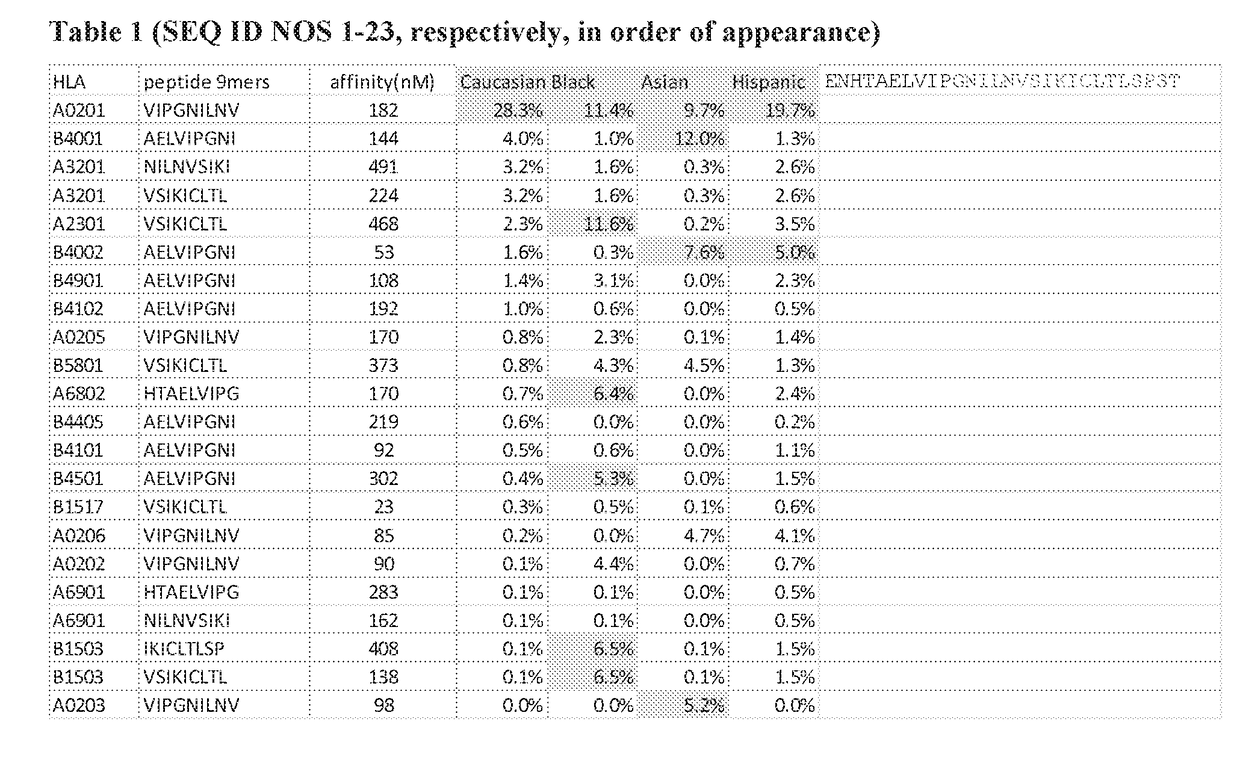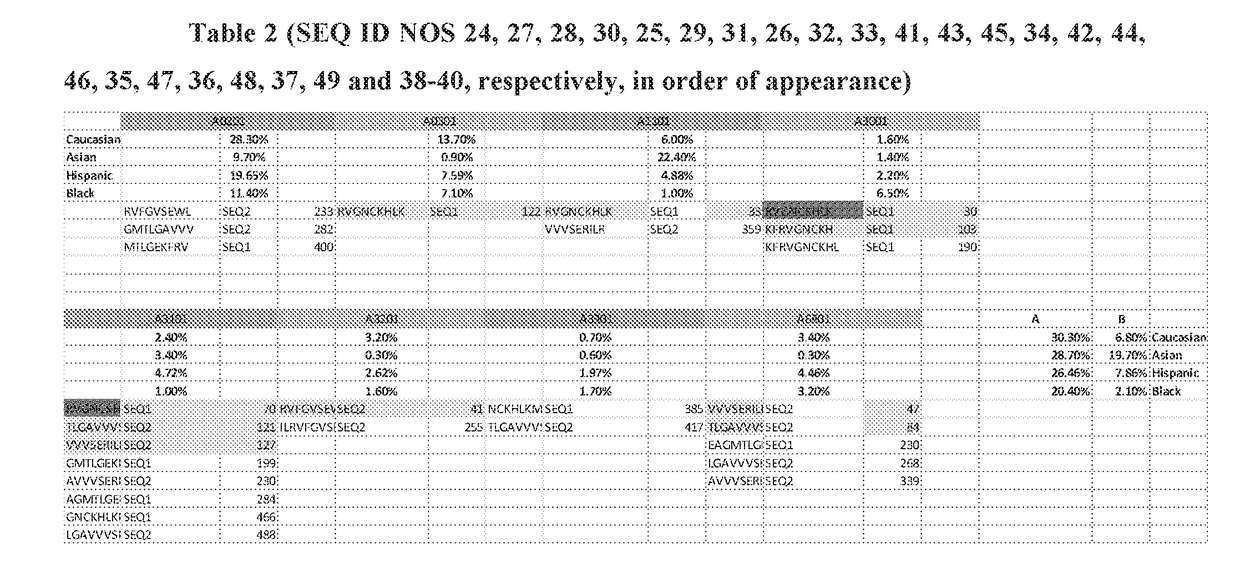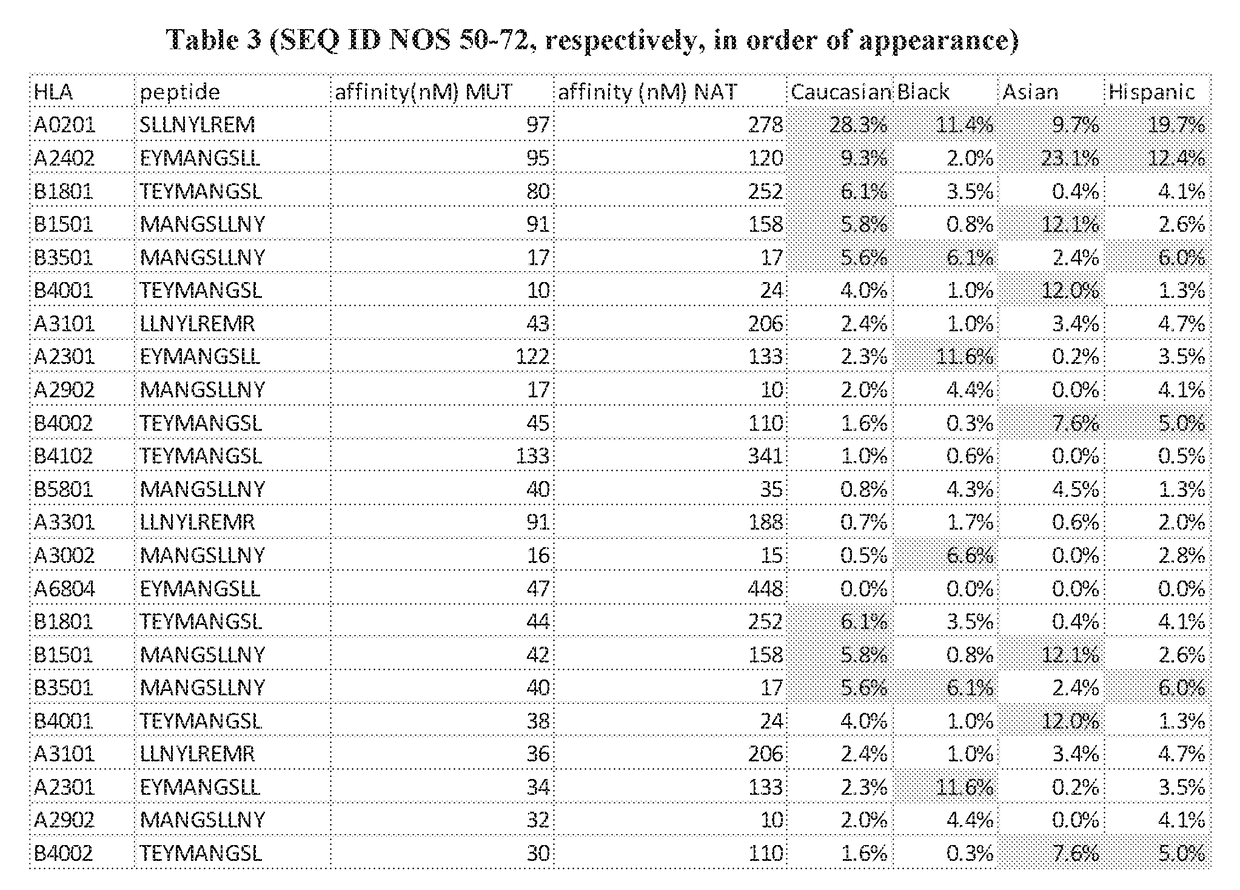Shared neoantigens
- Summary
- Abstract
- Description
- Claims
- Application Information
AI Technical Summary
Benefits of technology
Problems solved by technology
Method used
Image
Examples
example 1
[0743]sPDL1 Generates Immunogenic Epitopes Across a Variety of HLA Alleles.
[0744]PDL1 (CD274) is a trans-membrane protein which interacts with PD1 (CD279; PDCD1) on T cells and may be involved in multiple forms of natural immune suppression (such as during gestation). Expression of PDL1 is also utilized by tumor cells as a way to evade host immune response. sPDL1 is an alternate spliced form of the PDL1 gene. This alternate spliced form is caused by a lack of splicing at the end of Exon 4, reading into the 4th intron. The transcript terminates within intron 4. The translation product is in frame for 18 amino acids before a stop codon is encountered.
[0745]The translated product lacks the transmembrane domain typically found in PDL1 and thus is secreted. It also contains a cysteine within the neoORF translated from the intron and appears to dimerize in the media. The secreted form appears to block binding between PDL1 and PD1.
[0746]Applicants analyzed the predicted binding possibiliti...
example 2
[0749]Androgen Receptor Generates Immunogenic Epitopes Across a Variety of HLA Alleles.
[0750]The androgen receptor was identified as another alternate spliced form of a message that results in a neoORF which may be specifically expressed in tumor cells. Alternate splicing results in at least two isoforms that bring in cryptic exons that are .neoORFs.
[0751]Of these alternate transcripts, AR-V1 and AR-V7 were consistently seen in hormone resistant prostate cancer samples.
[0752]The immunogenic potential of these neoORFs was unknown and thus Applicants conducted predicted binding analysis across a number of common HLA alleles. These are shown for HLA A alleles (Table 2).
[0753]Again, as for sPDL1, a number of peptides are predicted to be immunogenic binders and these can be applied across a large subset of patients. These immunogenic peptides can be used across multiple patients.
example 3
[0754]Drug Resistant Mutations.
[0755]Treatment with various chemotherapeutic agents, particularly with targeted therapies such as tyrosine kinase inhibitors, frequently leads to new mutations in the target molecules that resist the activity of the therapeutic. Multiple strategies to overcome this resistance are being evaluated, including development of second generation therapies that are not affected by these mutations and treatment with multiple agents including those that act downstream of the resistance mutation.
[0756]Applicants have evaluated the immunogenic potential of the mutated peptides created by these resistance mutations and have found that for some, predicted immunogenic peptides are created that can bind to a range of HLA alleles. Two specific examples are provided below as well as data for a range of resistance variants.
BTK / C481S
[0757]A very common mutation to ibrutinib, a molecule targeting Bruton's Tyrosine Kinase (BTK) and used for CLL and certain lymphomas, is a ...
PUM
| Property | Measurement | Unit |
|---|---|---|
| Fraction | aaaaa | aaaaa |
| Fraction | aaaaa | aaaaa |
| Fraction | aaaaa | aaaaa |
Abstract
Description
Claims
Application Information
 Login to View More
Login to View More - R&D
- Intellectual Property
- Life Sciences
- Materials
- Tech Scout
- Unparalleled Data Quality
- Higher Quality Content
- 60% Fewer Hallucinations
Browse by: Latest US Patents, China's latest patents, Technical Efficacy Thesaurus, Application Domain, Technology Topic, Popular Technical Reports.
© 2025 PatSnap. All rights reserved.Legal|Privacy policy|Modern Slavery Act Transparency Statement|Sitemap|About US| Contact US: help@patsnap.com



